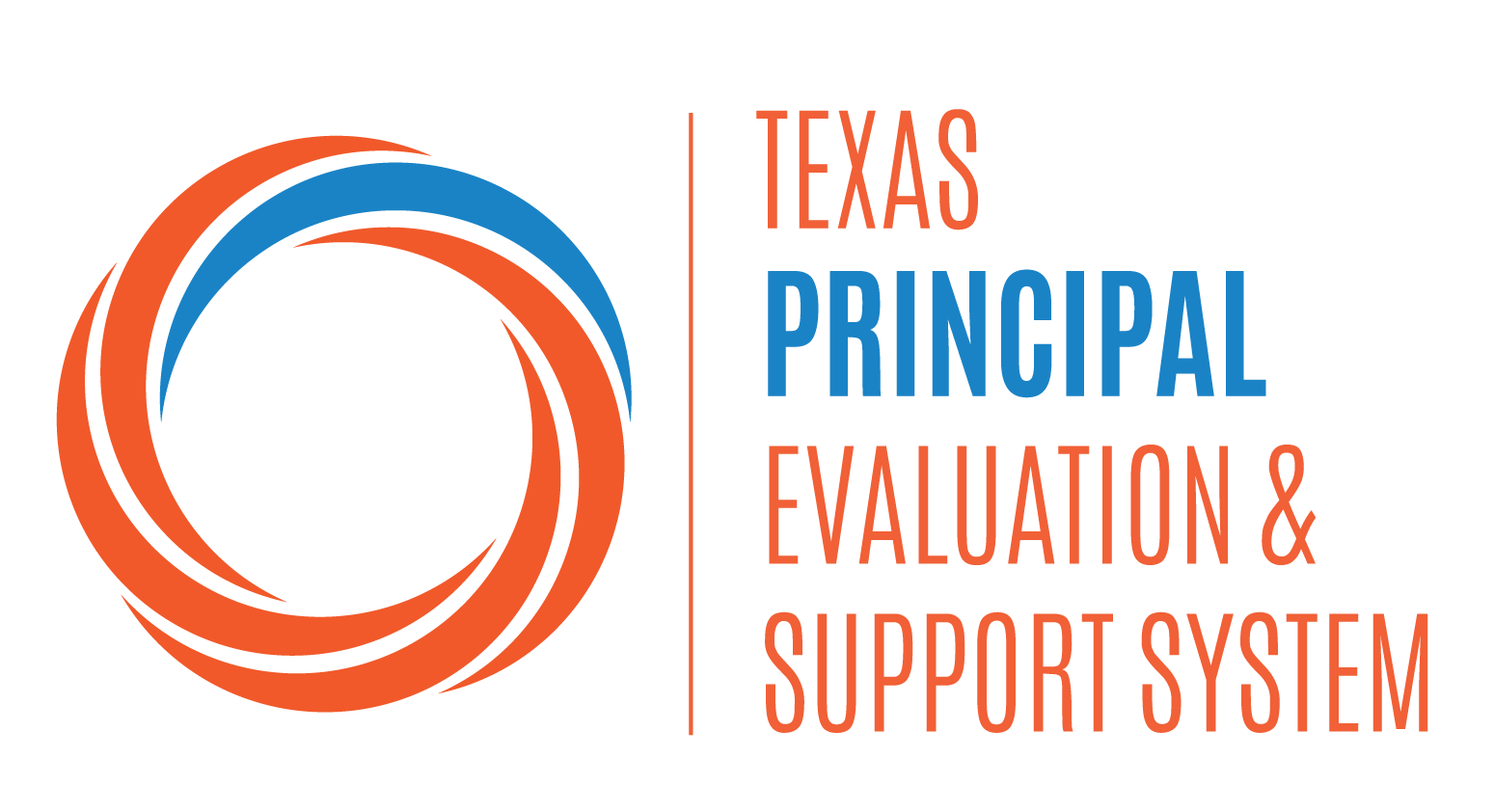Texas Principal Standards
The Texas Principal Standards have been developed and utilized in T-PESS in accordance with Chapter 149 of the Texas Administrative Code. The standards serve as a guide for improving school productivity, increasing student achievements, and continually reflecting upon and improving your effectiveness as a leader throughout all stages of your career.

Standard 1
Instructional Leadership: You are responsible for ensuring every student receives high-quality instruction.
As an effective principal, you prioritize student achievement by developing a clear definition of high-quality instruction based on your research of best practices. You implement and analyze a rigorous curriculum within state standards, which ensures that teachers align content across grades and meet the particular curricular needs of their diverse student populations. Additionally, you model instructional strategies and set expectations for the content, rigor, and structure of lessons and unit plans. By dedicating a part of each day to monitoring and improving instruction by visiting classrooms, giving formative feedback to teachers, and attending team meetings, you contribute to a higher student success rate.
In schools led by effective principals, data are used to determine instructional decisions and monitor progress. You implement common interim assessment cycles to track classroom trends and determine appropriate interventions. With a focus on instruction, your school is filled with effective teachers who can describe, plan, and implement strong instruction for students to stay actively engaged in cognitively challenging and differentiated activities.
Indicators
Rigorous and aligned curriculum and assessment
1a. You implement rigorous curricula and assessments aligned with state standards, including college and career readiness standards.
Effective instructional practices
1b. You help develop high-quality instructional practices among your teachers that improve student performance.
Data-driven instruction and interventions
1c. By monitoring multiple forms of student data to inform instructional and intervention decisions, you contribute to maximizing student achievement.
Maximize learning for all students
1d. You ensure that effective instruction maximizes the growth of individual students, supports equity, and eliminates the achievement gap.

Standard 2
Human Capital: You are responsible for ensuring there are high-quality teachers and staff in every classroom throughout the school.
By focusing on key issues related to human capital, you treat faculty/staff members as the most valuable resource and invest in their development, support, and supervision. You are strategic in selecting and hiring candidates whose vision aligns with the school's and whose skills match the needs. Once hired, teachers develop and grow by building layered supports that include regular observations, actionable feedback, coaching, and school-wide support; all of this development is supported by your facilitation of professional learning communities to review data. This development creates opportunities for effective teachers and staff to take on a variety of new leadership roles.
In your school, faculty and staff understand how they are being evaluated and what the expectations are for their performance. Staff can identify areas of strength, and they have opportunities to practice and receive feedback on growth areas from the leadership team and peers. Staff evaluation data show variation based on effectiveness, but also show improvement across years, as development and retention efforts take effect. Across the school, faculty and staff support each other's development through regular opportunities for collaboration.
Indicators
Targeted selection, placement, and retention
2a. You select, place, and retain effective teachers and staff.
Tailored development, feedback, and coaching
2b. You coach and develop teachers by giving individualized feedback and appropriately aligned professional development opportunities.
Staff collaboration and leadership
2c. You implement collaborative structures and provide leadership opportunities for effective teachers and staff.
Systematic evaluation and supervision
2d. You conduct rigorous evaluations of all staff using multiple data sources.

Standard 3
Executive Leadership: You are responsible for modeling a consistent focus and personal responsibility for improving student outcomes.
As principal, you take personal responsibility for the success of the school and motivate the community by modeling a relentless pursuit of excellence. Because of this, you are reflective in your practice and strive to continually improve, learn, and grow, acknowledging mistakes while remaining focused on solutions. When a strategy fails, you analyze data, assess implementation, and talk with stakeholders to understand what went wrong and how to adapt future strategies. Keeping staff inspired and focused on the end goal is crucial while supporting effective change management. It is important to have strong communication skills and be willing to listen to others and create opportunities for staff and stakeholders to provide feedback. By treating all members of the community with respect, you develop strong and positive relationships.
The impact of your leadership as principal on school productivity, instructional quality, and student achievement is instrumental in developing a purposeful community. Accordingly, your first priority is to work with teachers and key community leaders to develop and maintain a strong, intentional, and purposeful community. Waters & Cameron (2007) suggests that:
"Everything that happens in a school happens within the context of a community. School communities are comprised of students, parents, teachers and other school staff members, central office administrators and support personnel, the school board, other social agencies, and businesses. The more this diverse community is able to coalesce around shared purposes, the more sustainable and effective the school's change efforts will be."
Indicators
Resiliency and change management
3a. You remain solution-oriented, treat challenges as opportunities, and support staff through changes.
Commitment to ongoing learning
3b. You proactively seek and act on feedback, reflect on personal growth areas while seeking development opportunities, and accept responsibility for mistakes.
Communication and interpersonal skills
3c. You tailor communication strategies to the audience and develop meaningful and positive relationships.
Ethical behavior
3d. You demonstrate the moral imperative to educate all children and follow the procedures of your district by adhering to the Code of Ethics and Standard Practices for Texas Educators.

Standard 4
School Culture: You are responsible for establishing and implementing a shared vision and culture of high expectations for all staff and students.
As an effective principal, you leverage the school's culture to drive improved outcomes and create high expectations. You establish and implement a shared vision of high achievement for all students and use that vision as the foundation for key decisions and priorities for the school. You establish and communicate consistent expectations for staff and students, providing supportive feedback to ensure a positive campus environment. In addition, you focus on students‘ social and emotional development and help students develop resiliency and self-advocacy skills. Families are treated as key partners to support student learning, creating structures for two-way communication, and reporting regular updates on student progress. Regular opportunities exist for both families and the community to engage with the school and participate in school functions. Because of these standards, the staff believes in and is inspired by the school vision and has high expectations for all students. They inspire the staff to take responsibility for communicating the vision in their classrooms and implement behavioral expectations throughout the building and with the families of their students for learning outside of their own classroom.
Indicators
Shared vision of high achievement
4a. You develop and implement a shared vision of high expectations for students and staff.
Culture of high expectations
4b. You establish and monitor clear expectations for adult and student conduct and implement social and emotional supports for students.
Intentional family and community engagement
4c. You engage families and community members in student learning.
Safe school environment
4d. You create an atmosphere of safety that encourages the social, emotional, and physical well-being of staff and students.
Discipline
4e. You use a variety of student discipline techniques to meet the behavioral and academic needs of individual students.

Standard 5
Strategic Operations: You outline and track clear goals, targets, and strategies aligned to a school vision that continuously improves teacher effectiveness and student outcomes.
While assessing the current needs of your school, you review a wide set of evidence to determine the school's priorities in order to set ambitious and measurable goals, targets, and strategies that inform strategic plans. With leadership teams, you regularly monitor multiple data points to evaluate progress towards goals, adjusting strategies that are proving ineffective. You develop a year-long calendar and daily schedule that strategically maximize both instructional time and create regular time for teacher collaboration and data review. This deliberate allocation of resources (staff time, dollars, and tools) aligns your strategy with school priorities and goals. You treat central office staff as partners in achieving goals and collaborate with additional staff throughout the district to adapt policies crucial to meeting the needs of students.
Your faculty and staff have access to resources needed to meet the needs of all students. They understand the goals and expectations for students, have clear strategies for meeting those goals, and have the capacity to track progress. Members of the staff collaborate with you to develop the school calendar, and teacher and administrator teams meet regularly to review and improve instructional strategies and analyze student data. Throughout the year, all staff participates in formal development opportunities that build the capacity to identify and implement strategies aligned to the school's improvement goals.
Indicators
Strategic planning
5a. You outline and track clear goals, targets, and strategies aligned to a school vision that improves teacher effectiveness and student outcomes.
Maximized learning time
5b. You implement daily schedules and a year-long calendar that plan for regular data-driven instruction cycles, give students access to diverse and rigorous course offerings, and build in time for staff professional development.
Tactical resource management
5c. You align resources with the needs of the school and effectively monitor the impact on school goals.
Policy implementation and advocacy
5d. You collaborate with district staff to implement and advocate for district policies that meet the needs of students and staff.
